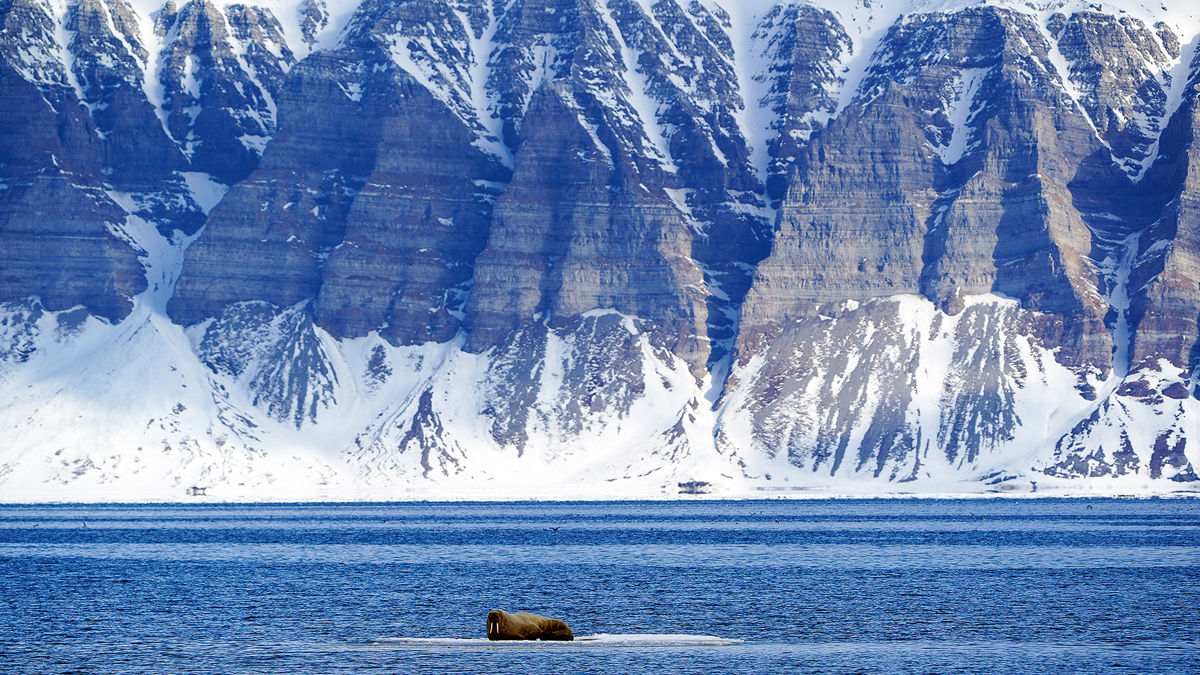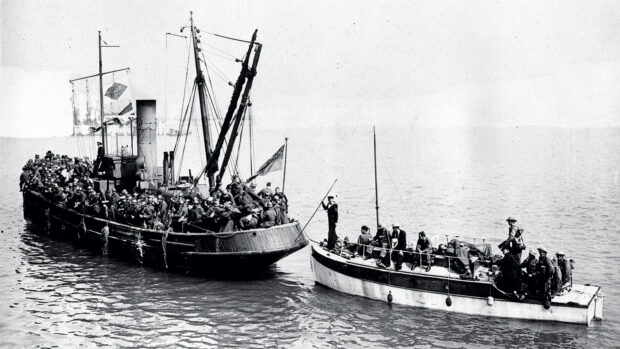Hugo Andreae gets an exclusive insight into Volvo Penta’s plans for a range of new diesel electric hybrid engines, starting with the Volvo Penta D4 Hybrid…
Volvo Penta has revealed a fascinating insight into its greener future with the launch of its first diesel electric hybrid leisure boat engine.
Although still a prototype, it is based on a standard 320hp D4 engine and DPI sterndrive with an electric motor/generator added to the driveline.
Speaking exclusively to MBY, sales project manager, Jonas Karnerfors, has confirmed that this will form the basis of a range of production Volvo Penta D4 and D6 hybrid engines.
To assess how well it works in the field, two of the prototype engines have been fitted to a 50ft aluminium fast cruiser.
Built by Marell Boats Sweden and operated by Hurtigruten Svalbard, a Norwegian-based adventure travel company, it will take visitors into the remote and environmentally sensitive waters of the Svalbard archipelago approximately halfway between Norway and the North Pole.
Article continues below…

Electric boats: A-Z of the 37 best all-electric models

Candela C-POD drive system aims to scale up the electric boats revolution
The sub-zero temperatures and long running hours (it is expected to clock up 1,000 hours this year) will provide a rigorous test of the engines’ reliability, while their ability to run almost silently in electric boat mode should minimise disruption to wildlife and improve the visitor experience.
Hybrid modes
Volvo is not yet ready to share full technical details of the new hybrid engine, such as the power rating of the electric motor or size of the lithium ion battery pack, but has confirmed to MBY that the parallel hybrid system will offer three different driving modes: electric, hybrid and power.
In electric mode, it will only be capable of speeds up to around 10 knots but should be able to cruise at 5-6 knots for up to five hours, giving a range of around 30nm on battery power alone.
In hybrid mode the system itself will select whether to use the electric motor, the diesel engine or both depending on a number of different factors such as speed and battery state. In power mode both the diesel engine and electric motor will run concurrently to boost acceleration and speed.
In fact, the electric motor actually replaces the mechanical supercharger normally fitted to the D4 and D6 engines by providing a similar torque boost to bridge the throttle lag at low RPM before the turbochargers kick in.
In the case of the Hurtigruten boat, the two 320hp hybrid engines are expected to deliver a top speed of 32 knots and a constant cruising speed of 25 knots.
Although the electric motor will be fully integrated into the driveline, adding less than 500mm to the length of the engine, the battery itself can be fitted remotely to ease packaging constraints in the engine bay.

The Marell M15 is an ideal test bed for the new technology combining lots of high and low speed running in sub-zero conditions
This can either be charged in the marina to minimise fuel burn or while the diesel engine is running. In the latter case, the system’s control unit is programmed to take advantage of the unused potential between the power that it is currently being used to propel the boat and its actual peak efficiency to recharge the batteries as efficiently as possible.
Both the driving and charging modes can be selected manually by the operator or left in fully automatic mode for the engine management system to decide.
Crucially, Volvo is determined to offer the hybrid drivetrain as an off-the-shelf package that includes the battery and propulsion unit rather than letting boat manufacturers or customers choose their battery supplier.
It hasn’t yet committed to a launch date for the production units but did indicate to MBY that it was likely to be within the next five years.
One of the big determining factors will be the size, availability and price of the battery packs. At the moment this is by far the most expensive component of the hybrid package, more than tripling the cost of a conventional Volvo Penta D4 diesel engine.
The hope is that battery density and price will come down substantially in the next few years as the drive towards electric vehicles brings reduced production costs.
Pay as you go
In the meantime Volvo is experimenting with a new form of pay-by-the-hour billing that will see Hurtigruten’s owners charged according to kW hours of engine use rather than the much higher upfront capital expenditure of buying the engines outright.
Volvo says this is an experiment in what it calls “e-mobility as a service”, and is said to be attracting a lot of interest from commercial operators.
However, it’s harder to see how the numbers would add up for leisure boat owners, who typically only run their engines for around 50-60 hours a year.

The ability to cruise in silence for up to 5 hours at a time will be ideal for wildlife watching in Svalbard. Photo: Daniel John Benton
The pilot programme is being run in partnership with Marell Boats and the Hurtigruten Group, giving Volvo a vital insight into how the new engines will integrate into the boat manufacturing process as well as how they perform in a real world environment.
Volvo is confident that the hybrid engines’ longer footprint should fit into the majority of existing boats’ engine bays but finding a suitable space for the batteries that doesn’t upset the weight distribution may prove trickier on some craft.
Volvo Penta D4 Hybrid test results
Jonas is confident that by the end of the season, the Hurtigruten test will have provided all the information needed to finalise the technical specification of the production engines.
That will just leave the question of when to make them available to the wider public and at what price they will be offered.
Either way Volvo is adamant that it is committed to launching a full range of hybrid engine solutions, not just for the D4 and D6 engines but right across its marine portfolio, including its larger IPS offerings.
“Our aim is to be the world leader in sustainable power solutions,” Jonas explains. “To do this we want to partner with companies that have the vision and courage to join us.”











